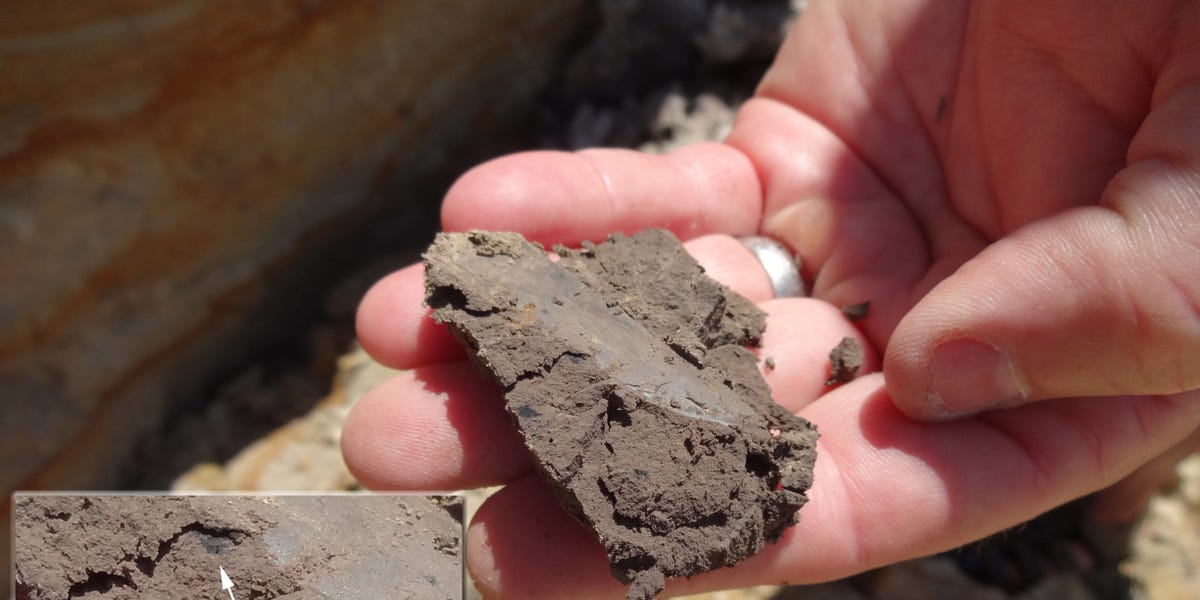
North and South America were the last inhabited continents that modern humans settled thousands of years ago, but when and how they reached the Americas remains a mystery.”We don’t know who these first peoples were,” Todd Braje, executive director of the University of Oregon Museum of Natural and Cultural History, told Business Insider. We don’t know “where they came from, when they arrived, the technologies that they had available,” he added.For many years, archaeologists thought the first humans to set foot in the Americas did so around 13,000 years ago. But more recently, new findings have challenged that theory, pushing the timeline back even further.Now, a recent series of discoveries on Parsons Island, Maryland, could wind back the clock yet again. And it raises some difficult questions about early human migration across North America.Outside the mainstreamDarrin Lowery has been hunting for artifacts on Maryland islands around the Chesapeake Bay since he was 9 years old. Over 40 years later, he’s amassed a large collection of tools that he believes some of the earliest Americans used.He found nearly 300 tools on Parsons Island and says they’re around 22,000 years old. That’s thousands of years before many scientists think humans first journeyed to North America.If Lowery’s hypothesis is correct, it would significantly change our ideas of how and when people started arriving in this part of the world.However, Lowery, who mainly works as an independent geologist, hasn’t published his latest work in a peer-reviewed journal, making other experts skeptical of a theory that’s already a bit outside the mainstream.Lowery doesn’t mind the criticism, though. “If I’m wrong, I’m fine with that,” he told Business Insider. “Prove me wrong.”When did the first modern humans reach North America?
Darrin Lowery found nearly 300 artifacts on Parsons Islands, some of which he dated to around 22,000 years old.
Darrin Lowery
Around 13,000 years ago something significant was happening across northern North America: The glaciers that had covered part of the continent for millennia were melting.Archaeologists thought humans needed to wait for those glaciers to melt to migrate across this region. Otherwise, the journey through what is now Canada would have been too dangerous, with little food available along the way.So, for most of the 20th century, the theory was that the first Americans came from Asia around 13,000 years ago, crossing the now-submerged Bering land bridge that connected Siberia and present-day Alaska. Then those humans and their ancestors made their way across the areas of the Americas with fewer glaciers.But by the second half of the 20th century, older sites were turning up, like a 14,500-year-old site in Chile, Monte Verde. If people were that far south at the time, it meant humans had to have traveled from North America to South America well before 13,000 years ago.”It really changed everything about what we understood about when and how people arrived to the Americas,” Braje said of the Chile site. One alternative theory is that people followed the less icy Pacific Coast and then started moving east.While individual sites are often subjects of debate, the widely accepted range of humans’ first arrival in the Americas is now between 20,000 to 15,000 years ago, Braje said.
But Lowery said his artifacts are even older.Dating 22,000-year-old artifacts
Parsons Island has undergone a lot of erosion, so many of the artifacts are no longer in their original location.
Darrin Lowery
Over the course of 93 visits to Parsons Island, Lowery and other volunteers found a mix of chipped-off rock flakes, a stone for hammering, and knives.Due to erosion, most of the artifacts fell out of the embankment that once held them.However, nine were still stuck in the bank, and three of those dated to around 22,000 years ago.Dating ancient artifacts like this is tricky and is often the source of contention around these sites that question our understanding and timeline of ancient human history.For instance, most dating methods require organic material and won’t work on stone tools. Instead, scientists test charcoal, pollen, and other matter found near stone artifacts.However, if a tool shifts from its original position — like if it falls out of the embankment that’s holding it — it’s difficult to date it reliably.That’s why only a handful of Lowery’s artifacts could be tested.Though Lowery doesn’t want to publish a paper through peer review — a process he called “antiquated” — he said he did his due diligence in dating the artifacts.He used different methods to date the still-in-place artifacts and also sent samples to independent labs for verification. Using radiocarbon dating that measured the amount of carbon in flakes of charcoal, an independent lab estimated the artifacts’ ages to be between 20,563 and 22,656 years old.If these artifacts are as old as the lab analysis suggests, then Lowery’s discovery could rewrite our understanding of ancient American human history.The journey from Alaska to Maryland
Around 21,000 years ago, glaciers covered most of Canada.
NOAA Climate.gov
Around 21,000 years ago, nearly all of Canada was covered in glaciers. Therefore, one of the biggest questions with Lowery’s theory is how humans could have made the trek from Alaska to Maryland 22,000 years ago when there was a vast, icy landscape in between.But Lowery said nearly 26,000 years ago, Beringian wolves traveled through a temporary corridor between ice sheets. Humans could have used the same route, he said.”I think this is largely a misconception that ice is an impediment,” Lowery said. “It’s a challenge, but humans are pretty damn smart.”Lowery admitted this is just what he called “a story,” but it’s one some experts refuse to entertain. One archaeologist that The Washington Post spoke with refused to comment on the non-peer-reviewed paper.For Braje, Lowery’s research is reminiscent of past debates when new discoveries pushed back the timeline for the first American arrivals.Braje didn’t dismiss Lowery’s ideas outright, but he thinks they need to go through the peer-review process. “I think all these ideas are valid ones that we should be talking about,” he said, “but then we have to go to the scientific evidence.””To make big claims like this takes a lot of work, a lot of evidence, a lot of enduring critique, but that’s part of the scientific process,” Braje said.






